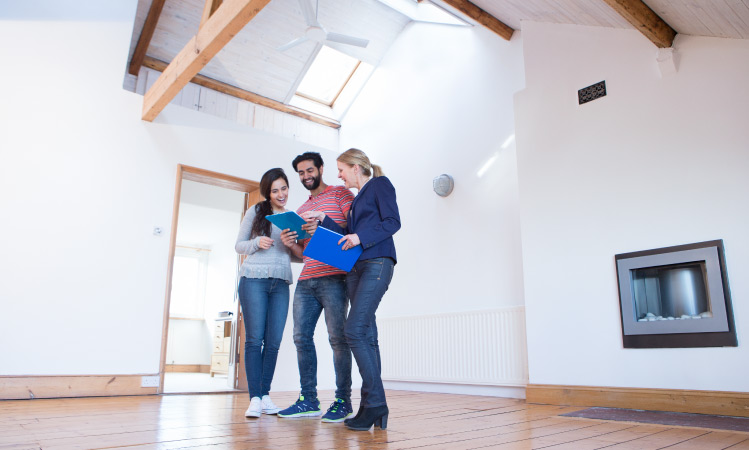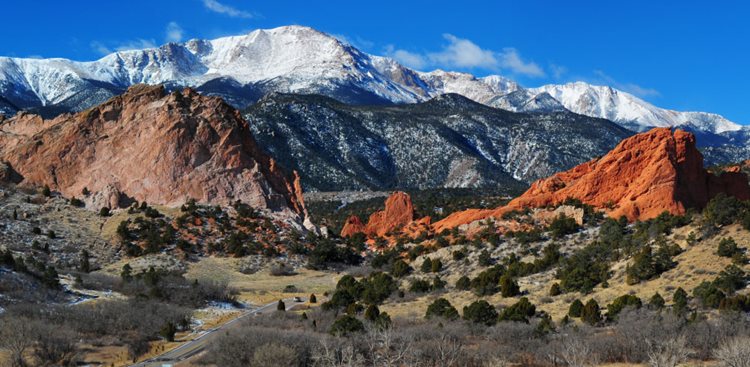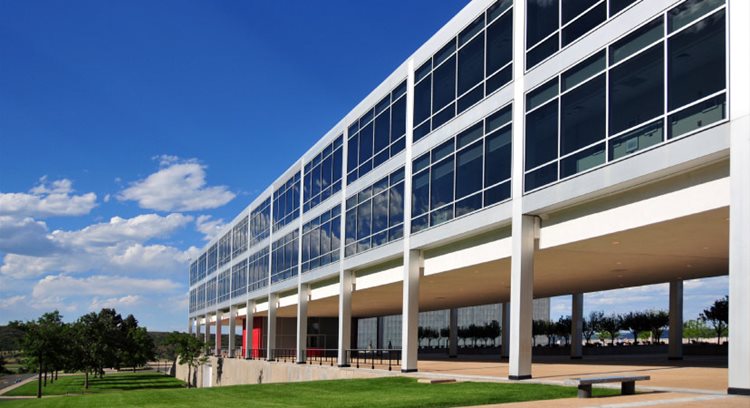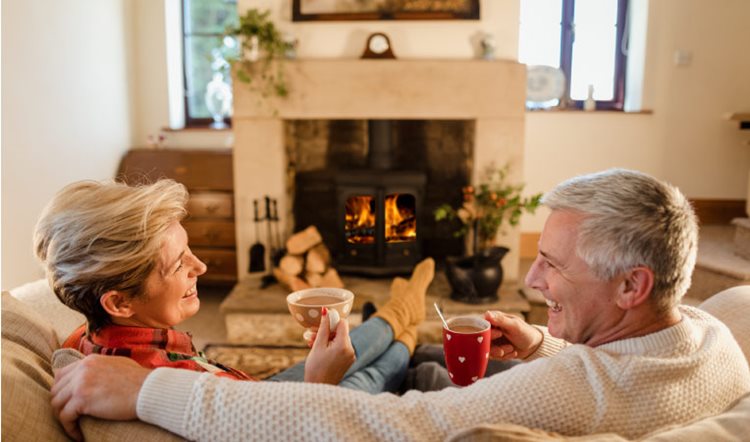
Living in Colorado Springs: 16 Things To Know Before You Move Here
Colorado Colorado Springs
With remote working and a renewed focus on healthy lifestyles, a growing number of people are looking at moving to Colorado Springs, CO. Why that area, in particular? Because the city has such a great variety of outdoor activities, walkable neighborhoods, and family-friendly places to visit — from parks to museums to restaurants. Living in Colorado Springs means temperate weather, natural beauty, and relatively affordable housing that keeps expenses in check. And that’s just a preview.
Want to know more about what it’s like living in Colorado Springs? Here’s a closer look at what makes The Springs one of Colorado’s most popular cities, as well as answers to some of the top questions people have about living, working, and playing there.
| Planning a move to The Springs? Start by getting a quote from PODS. |
Quick Facts About Living in Colorado Springs
Geography
Colorado Springs is located at the foot of Pikes Peak, 70 miles south of the state’s most populous city, Denver. Because of its proximity to mountains, you’ll find that the air is dry, there are several different elevations throughout the city, and there’s a variety of unique Colorado Springs neighborhoods and attractions, due to the surrounding natural geography.
Size
The city of Colorado Springs is about 195 square miles, and there are more than 9,000 acres of parkland.
Population
Colorado Springs is the second most populous city in Colorado, with a population of just over 491,000 residents.
Demographics
Colorado Springs has a median age of about 36 and, per the last census, the population is about 72 percent white, 19 percent Hispanic or Latino, 6 percent Black, and 3 percent Asian.
Is It Better to Live in Denver or Colorado Springs?
While everyone has their own opinions about whether it’s better to live in Denver or Colorado Springs, the data suggests that Colorado Springs may be preferable because of its affordability. Here are a few points to consider about the two cities:
Cost of living
The cost of living in Colorado Springs may be 10.3 percent higher than the national average, but it’s lower than Denver, which is actually 27.6 percent above the national average.
Housing market
The average home value in Colorado Springs is $450,000 — a bit more affordable than the average Denver home value of $544,200.
Apartment rentals
Though the Denver market has plenty of rentals available, with an average rent of $1,975 a month, they also cost more than in Colorado Springs, where the average rent is $1,550.
Distance
Why not enjoy the best of both worlds? Denver and Colorado Springs are about 70 miles apart, so you can easily travel between the two. It typically takes an hour or so to drive without any stops.
16 Things To Know About Living in Colorado Springs
Is Colorado Springs a good place to live? A lot of people think so because of its stunning natural beauty, outdoor recreational opportunities, and high quality of life. Nestled at the foot of Pikes Peak, the city offers easy access to hiking, biking, and skiing, making it a paradise for outdoor enthusiasts. What’s it really like living in Colorado Springs? Read on to find out.
1. The Cost of Living in Colorado Springs Is Surprisingly Affordable — for Some Things.
Is it expensive to live in Colorado Springs? Though the cost of living is 5 percent higher than the national average, not everything is more expensive here. The average Colorado Springs utility bill, for example, is nearly 8 percent lower than the country’s average, and groceries are almost 2 percent lower. Be aware, though — cost of living is always fluctuating, especially in a city growing as rapidly as Colorado Springs.
So, is Colorado Springs an affordable place to live? Depending on your income level and spending patterns, Colorado Springs can certainly be an affordable place to live — especially when compared to Denver or other Colorado cities. The average home value in Colorado Springs, for example, is $94,200 less than the average home value in Denver.
| Q: Is Colorado Springs expensive to live in? A: The cost of living in Colorado Springs is 10.3 percent above the national average, but in comparison to Colorado’s capital city, it’s actually cheaper. Apartments, home values, and many major costs of living are all less expensive in Colorado Springs vs. Denver. |

The real estate market in Colorado Springs is thriving — and competitive.
2. Home Prices Are Affordable in Many Colorado Springs Neighborhoods.
And speaking of values, what are home prices like in Colorado Springs? It all depends on what neighborhood you settle into and what you buy. Life in Colorado Springs can be affordable for home buyers and, for many, home prices in Colorado Springs are reasonable. Colorado Springs real estate is hot, though. The average home value is $450,000.
| Q: What salary is needed to live comfortably in Colorado Springs? A: According to MIT’s Living Wage calculator, a family with two working parents and two children needs to make $131,098 annually before taxes to earn a living wage in Colorado Springs. Of course, this does not mean that a low six-figure salary is going to ensure living comfortably. To do that, you’d need closer to $253,000 per year. |
3. Rentals Are Plentiful For Those Living in Colorado Springs.
If you’re going to be a renter, you may wonder: Is it better to live in Colorado Springs or Denver? Although Denver is certainly an amazing choice with lots of rentals, it’s definitely more expensive, and you have more competition for those rentals. Colorado Springs, on the other hand, is more affordable, has less competition, and may actually have more places available to rent than you think because of the high number of colleges, universities, and military bases in the area.
The average monthly rent for a one-bedroom apartment in Colorado Springs is $1,550, and the average apartment size is 859 square feet. Of course, this average goes up or down, depending on the specific neighborhood where you rent. And while most residents tend to own their homes, 39 percent of households in the city are renter-occupied.

Stunning views and abundant recreation are definite draws for people considering living in Colorado Springs.
4. Recreational Activities Are Abundant in and Around The Springs.
If it’s not obvious already, Colorado Springs has great recreational options for people of all ages. In fact, it’s where the U.S. Olympic & Paralympic Training Center is located, so there are many like-minded fitness advocates literally running around.
There are miles of trails, mountain biking spots, and hiking areas around the city, especially in picturesque parks like Palmer Park and North Cheyenne Cañon Park. And if you’re looking for other things to do with family or friends, you don’t have to go too far. Let’s take a look at some of the city’s major attractions.
What To Do in Colorado Springs
- Cave of the Winds Mountain Park: You can tour this magnificent complex of caves daily and enjoy the rest of the Pikes Peak area while you’re there.
- Cheyenne Mountain Zoo: This Colorado Springs zoo offers up-close-and-personal attractions and covers 146 acres. The zoo gives you a good look at the Rocky Mountain habitats of many animals and has a great primate display, as well.
- Garden of the Gods: If you’re looking for a great place to hike and explore nature, then Garden of the Gods Visitor & Nature Center is the right spot to visit. It covers 1,367 acres with sandstone and limestone formations that are awe-inspiring.
- Pikes Peak: Talk about a view! Pikes Peak is the highest summit of the Southern Front Range of the Rocky Mountains. It is just west of downtown Colorado Springs and makes for an unforgettable day trip from The Springs to its base city of Manitou Springs.
- Pioneers Museum: This is a budget-friendly way to learn more about the history, heritage, and people of Colorado Springs. The free museum collects, preserves, and promotes the history of the Pikes Peak area and its original residents.
- ProRodeo Hall of Fame & Museum of the American Cowboy: This beloved local museum is best known for its efforts to preserve the legacy of rodeo and the cowboy. It seeks to educate visitors about the impact and history of rodeo on Western American culture and to recognize notable figures (past and present) within the rodeo community.
5. Living in Colorado Springs Means Having Your Pick of Great Neighborhoods.
Is Colorado Springs a nice place to live? If you’re judging based on neighborhoods, then absolutely yes — Colorado Springs is a good place to live. From a walkable downtown to rural suburbs with above-average schools and space to keep horses, Colorado Springs really has it all. Here are a few of our favorites:
Pleasant Valley (Best for Families)
Tucked away on the west side of Colorado Springs, this charming area is picture-perfect for raising a family. Just minutes away from the iconic Garden of the Gods Park, Pleasant Valley is full of gorgeous green space — like Westmoor Park, a local gem with towering trees and stunning views of Pikes Peak. Perhaps most appealing, this neighborhood has rents and home prices that make it one of the most budget-friendly nooks of Colorado Springs. And while there isn’t a bustling downtown, it’s super easy to get to shopping and dining in Old Colorado City or downtown Colorado Springs.
South End (Best for Young Professionals)
Just a few minutes from downtown, this vibrant neighborhood is known for its trendy restaurants, craft breweries, and coffee shops. Walkability gets high marks from residents, while its mix of modern apartments and historic buildings offers stylish options. The arts are central to the South End experience, with murals, galleries, and pop-up markets. Rooftop bars with gorgeous views are social hubs — and ideal networking spots for ambitious young professionals to make connections and climb up that career ladder. For pure fun and good cocktails, though, try Poor Richard’s, a longtime local favorite.
Palmer Lake (Best for Retirees)
At the foot of the Rocky Mountains, this neighborhood gives residents an amazing landscape with the lake itself as its centerpiece — which means fishing, quiet strolls, and serene views. A quaint downtown area offers locally owned restaurants and a few shops. It’s not a city-style downtown, but bigger hubs are nearby — and who needs all that when you have the opportunity to support local businesses and get to know your neighbors, too? Homes are in the mid-range here, with an average value of around $514,700, and rent averages around $1,775 for a one-bedroom apartment.
6. Colorado Springs Schools Are Top-Ranked in the State.
Colorado Springs has great schools, both public and private. In fact, the city of Colorado Springs also ranks significantly higher in educational attainment than the national average.
Several of The Springs’ schools (primary and secondary) rank within the top 10 best schools in their category for the entire state of Colorado:
- Pinon Valley Elementary School – No. 7 Best Elementary School in Colorado
- Cheyenne Mountain High School – No. 4 Best Public High School in Colorado
- Classical Academy High School – No. 6 Best Public High School Teachers in Colorado
- Fountain Valley School – No. 1 Best Boarding High School in Colorado
- The Colorado Springs School – No. 4 Best Private K-12 School in Colorado

The U.S. Air Force Academy in Colorado Springs is just one of a variety of higher-ed opportunities in the area.
7. Quality Colleges Offer Higher Education in The Springs.
There is an array of major post-secondary schools in the area, from colleges to specialty universities. A few standouts include:
| Fun Fact: Almost 42 percent of Colorado Springs residents aged 25 and older have at least a bachelor's degree. The national number? A little more than 35 percent. |
8. Wonderful Weather Is a Hallmark of Living in Colorado Springs.
Colorado Springs weather is one of its many perks. The summers are mighty nice (50°F-84°F*), and winters offer snow-worthy temps (17°F-45°F*) — an average of nearly 5 feet of snow falls annually (ski trip!). The area’s altitude and proximity to the mountains keep Colorado Springs’ weather temperate year-round, but you still get to experience all four seasons. There’s also an average of 300 days of sunshine annually, so get your sunscreen ready for life in Colorado Springs.
*Average temperatures (low and high) for the season
| Q: How cold does it get in Colorado Springs? A: Though you’ve likely heard of Colorado winters, Colorado Springs weather also experiences about 300 days of sunshine year-round. The average winter temperature from the past 30 years is about 31 degrees Fahrenheit, though the average temps in January can get as low as 14 degrees. If you’re moving to Colorado Springs, you’ll want to pack a good coat and some layers — and prepare for a beautiful snowstorm or three. |
9. Colorado Springs Has a Diverse Job Market.
Colorado Springs weather isn’t the only thing attracting new residents. A wide array of industries has created a diverse job market. The unemployment rate within the city is relatively low (4.6 percent as of December 2024), with the key industries including aerospace and defense contracting, healthcare and medtech, IT, software development, cybersecurity, semiconductor manufacturing, and sports.
The Pikes Peak region has more than 35 Fortune 500 companies, and some of the largest employers include Lockheed Martin, Progressive Insurance, Microchip Technologies, Newmont Mining Corporation, and the U.S. Olympic Committee. Area military installations also account for some local employment, including Fort Carson Army Base, Schriever, and Peterson Space Force Bases.
| Q: Is Colorado Springs somewhere people are looking to move? A: Yes, it definitely has a reputation for being an excellent place to live — even if it means making a cross-country move to get there. People come from all around for the great Colorado Springs weather, natural beauty, and interesting things to do. One of our personal faves is the Garden of the Gods! |

Global flavors spice up the dining scene in Colorado Springs.
10. The Restaurant Scene Dishes Up Delicious Variety.
There are lots of local chefs making the restaurant scene in Colorado Springs one of the best. From mainstays that have been around for decades, like Adam’s Mountain Cafe, known for two delicious vegetarian dishes, the Buddha Bowl and Senegalese Vegetables. And you can catch other world flavors at eateries such as Monse’s Pupuseria, Edelweiss Restaurant (get the bratwurst, goulash, and rump steak), and PigLatin Cocina, which serves Latin-American fusion with flair.
11. Commute Times Aren’t Terrible — and Public Transportation Helps Ease Congestion.
So just how big is Colorado Springs? Big enough that if you’re living in Colorado Springs, you’ll likely want your own car — or perhaps two, depending on your family situation — but the traffic is generally light (though there are definitely areas prone to congestion). There is a reasonable amount of public transportation via Mountain Metro Transit, the city’s bus system. And the average commute to work is only 24 minutes, despite the city’s broad 194.5-square-mile footprint.
| Pro Tip: If you’re worried about navigating snowy mountain roads in a moving truck rental, consider a PODS portable moving container instead. Take your time loading the container right in your driveway. When it’s ready, your container will be picked up and taken to your new mountain home. |
12. Living in Colorado Springs Is Great for Families.
Residents of suburbs such as Gleneagle, Palmer Lake, and Woodmoor rave about how they are the best places to raise a family in Colorado Springs, noting things such as how safe they feel, the friendly neighbors, and how comfortable the homes are for families. There are also plenty of educational opportunities with nine public school districts serving greater Colorado Springs with more than 100 public elementary, middle, junior, and senior high schools. There are also more than 50 private, parochial, and charter schools.
13. Crime Rates Are Relatively Low — With Lots of Progress Toward Public Safety.
Is Colorado Springs safe? Colorado Springs’ crime rate is a bit higher than most communities of similar population size, and violent crime in Colorado has increased considerably. Despite these statistics, though, many residents note feeling safe in Colorado Springs and say that the local police are attentive and responsive.

With abundant recreation, dining, and culture, Colorado Springs is a great place to retire.
14. Thinking of Retirement? Colorado Springs Is Ideal for Your Golden Years.
If you are thinking Colorado Springs might be right for you, you’re definitely going to want to look further into moving there. After all, Colorado Springs is often ranked as one of the best cities to live in as well as one of the best for retirement. Want more proof? U.S. News & World Report places Colorado Springs as No. 3 on its “Best Places to Live” list for 2025-2026 and No. 46 on its “Best Places to Retire” list.
15. There Are Additional Pros (and Cons) of Living in Colorado Springs.
As with any city, there are positives and negatives to living in Colorado Springs. So what are the pros and cons of living in Colorado Springs?
Pros of Living in Colorado Springs
- The city is surrounded by stunningly beautiful scenery — but still has all the convenience and culture of a thriving metro area.
- There are mountain views aplenty in the Pikes Peak region. In Colorado Springs, you have the ability to play outside most of the year and enjoy recreational sports like downhill skiing, cross-country skiing, snowshoeing, and even sledding — for kids of all ages.
- If you have a dog, you can enjoy long walks with your pup year-round in this super-dog-friendly city. The temperatures are ideal for hanging outside and enjoying the dining scene, as well.
Cons of Living in Colorado Springs
- With a thriving job market also comes competition. And with all the people moving to Colorado Springs, that competition may be fierce.
- Housing can be more expensive in certain areas, as well, relative to where you’re coming from.
- A higher population density can cause greater traffic and add to pollution, not to mention crime rates may be higher.
16. Overall Quality of Life in Colorado Springs Is Great.
If you’re wondering, “Is Colorado Springs a good place to live?,” the answer is a resounding yes. Living in Colorado Springs has solid economic growth, top-rated schools, and lots of recreational activities. In fact, many people describe living in Colorado Springs as like being in a year-round playground, where you can hike, ski, camp, and go rafting on the Royal Gorge. And don’t forget about the museums, parks, and world-class zoo!
Moving to Colorado Springs? Let PODS Help You Get There.
Make your move to Colorado Springs a flexible one with a PODS portable moving container delivered right to your driveway. One month of storage is built into every move so you can pack and load on your own schedule. When you’re ready, the container will be picked up and transported to your new home in The Springs, or you can keep it in a secure PODS Storage Center if you need more time.
| Learn more about living in and moving to Colorado Springs on the PODS Blog. |
Karen Dybis is a freelance journalist and a frequent contributor to the PODS Blog. Her work has appeared in Time magazine, U.S. News & World Report, The Detroit News, and more.
Editor’s note: Average and rent prices were obtained from RentCafe and average home values were obtained from Zillow. For ease of reading, monthly rental prices were rounded to the nearest $25 and home values were rounded to the nearest $100.
Related Articles
Comments
Leave a Comment
Your email address will not be published. Required fields are marked *
